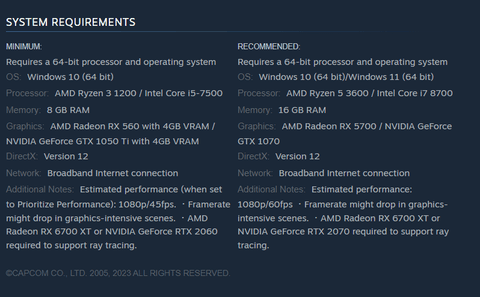Three words:
Individual. Hair. Strands.
This is the kind of technological marvel we’re expecting to see for the highly anticipated Resident Evil 4 remake. With initial reviews on Metacritic currently through the roof, the remake to what is considered one of the greatest games of all time is causing a storm in the wake of its release.
You may have seen our current offer, and we're offering anyone who orders one of our high end PCs to get Resident Evil 4 for free. So whether you’re a newcomer to the series and have been intrigued by the upcoming game, or a veteran who's been following the series for the decades since its first release, let’s take a look at the history of the series, Capcom’s pioneering RE Engine, and what kind of power you’ll need to run Leon and every single strand of his hair.
Enter the Survival Horror
Back in 1996, Capcom released Resident Evil on the original Playstation, and it was a genuine hit, solidifying survival horror as a genre. It was a perfect balance of resource management, inventive monster designs and the sheer horror of being trapped in a mansion populated by zombies… and far worse. It became infamous for its voice acting and sometimes clunky script (due to being the result of the writers translating the script verbatim from Japanese to English). It certainly wasn’t expected to be the smash hit it ended up becoming, but thanks to it, it changed horror in video games forever.

It was so successful, it spawned a sequel within just a few years - Resident Evil 2 - which spread the scope to city-wide rather than just one location, and featured a unique ‘zapping’ system, enabling four possible ways to play the story of Resident Evil 2 and endless replayability. The series went from strength to strength, including a phenomenal remake of the original game on the Nintendo Gamecube only a few short years after the original in 2002, utilising clever tricks such as pre-rendered backgrounds to save on space that still look good today. The series diverted from survival horror to action horror when the groundbreaking Resident Evil 4 first released also on the Gamecube in 2005 after years of refining their formula (coincidentally also spawning Devil May Cry and Haunting Ground in its wake) and again, Resident Evil changed the face of horror.
Times have changed since then, and after a bumpy few years following the aforementioned Resident Evil 4, as well as a few disappointing games that tried to capture Resident Evil 4’s lightning in a bottle; Capcom took the survival horror formula once again and refined it, creating an entire new engine for it. And so we enter the world of Resident Evil 7, and the engine that created it.
RE: Engine
Reach for the Moon Engine (rather than the Resident Evil Engine), was Capcom’s successor to their previous MT Framework engine, and rocketed to fame as a prime example of the capabilities of a modern video game engine. Created for their soft reboot of the Resident Evil series and debuting with Resident Evil 7: Biohazard, it used features such as photogrammetry to create higher quality assets, improved VR support, volumetric lighting features and new physics simulation options to allow for more realistic debris. It’s been Capcom’s main engine ever since its inception in 2014, and Capcom have been praised highly for its technical achievements.

Individual Hair Strands
So here we are in 2023, with 12 games already developed under the RE: Engine’s belt and several more just on the horizon. Capcom, enjoying the success of remaking some of its classics for a modern audience, are finally able to showcase the true gory detail of the survival horror in their original visions. Polygons have been replaced with highly detailed areas filled to bursting with modelled assets, sophisticated character models and movements and exceptional computer AI for both enemies and friendly characters. The engine is constantly being used in innovative ways to get the most from its engine, so of course, we all need to know if it’s going to turn our PCs into jet engines trying to run it.
Specs required for Resident Evil 4: Remake
Fortunately, the Resident Evil 4 minimum specifications are exactly the same as the previous entry, Resident Evil: Village. To run the game, you won’t need to use for the best gaming CPU available: AMD Ryzen 3 1200 or an Intel Core i5 7500 will be able to handle the game just fine. We advise having at least 8GB of RAM too. For those sweet individual hair strands (there is even a setting for Leon’s hair to have his hair rendered individually), then an i7 or an AMD Ryzen 5 3600 would be able to experience rural Europe at its best.

Source: Resident Evil 4: official Steam page
Capcom has gone from strength to strength in the past decade. Similar to how it redefined survival horror back in 1996, then in 2004 with Resident Evil 4, and now with the RE: Engine, who knows what could be next for them? As a fan since the very first game back in 1996, it’s certainly been a rollercoaster as I’ve watched the series grow, change, falter and become to powerhouse it now is. Not to say there hasn’t been hiccups, but they’ve taken feedback on board, listened to the community and to me, that’s what truly makes great video games. To take their own mantra as an example: "We do it!"
Resident Evil 4: Remake releases on Playstation 4, Playstation 5, X Box series X, X Box series S and Steam on March 24th.







